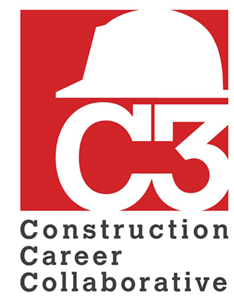
"I knew I wanted to find a profession that would give me financial freedom to spend time pursuing the passions of my life. I want to start a career, not just find a job."Jerry FordElectrical Student
I had coffee with the president of a C3 Accredited Employer last week. We talked about how to create a sustainable craft workforce. As you know, that is the heart of the mission of C3. For years we have continued to face the diminishing ranks of those who want to enter careers in craft trades. This workforce shortage problem will continue to grow until we change how we think about and handle our workforce. Investing in this change is a long game, not a short-term stop gap, and is the mission of all C3 Accredited Employers and Owners. Even more than mission, it is the legacy each of us has the opportunity to leave on our industry.
The solution to the workforce problem requires that we solve the talent pipeline crisis by shifting our mindset to view talent as an asset to our bottom line. Just like materials require a supply chain so does talent. The investment needed to truly impact the talent shortage will require a collaborative approach where commercial construction identifies critical positions, creates a common vocabulary around job competencies, and collectively forecasts demand. As C3 continues to consult with Accredited Employers to create competency maps, we see that critical positions are often overlapping from trade to trade and vocabulary is already similar. Believe me when I tell you, there is common language around the threshold skills needed to enter the industry and what pre-employment skills are required to be successful. Now it is time for a collaborative approach to determine ongoing demand and how to approach the suppliers of talent to create a pipeline that produces high quality and is ready to tackle the unique cyclic nature of construction company hiring.
C3's initial strategy has been to give companies the ability to retain workers through investment in craft training career paths that engage workers in building successful careers. We talk about talent management and the lifecycle of talent because we realize that requiring a training program and an OSHA 10/30 certificate isn't going to instantly create sustainability in the talent pipeline. In fact, it does little to increase the number of potential candidates coming into the industry. In reality, having a training program with an identified career path is pre-work for sustainability.
Let's face it, we aren't very enticing to the digital native demographic currently residing in our high school and community college classrooms. Employing new technologies like 3D simulation and virtual reality to take the job site to the classroom not only engages learners but is also more cost-effective as it limits material cost and consumption but allows for more repetition for skill development. Challenging how we teach, and working with school districts to make sure the best knowledge provider is in the classroom, which may not be the industry Subject Matter Expert, are conversations we need to begin having now. There are many ways we can grow our image and change how we attract new talent and we must stop settling for those who are temporarily looking for work instead of actively seeking careers. By raising the bar on what we expect from our entry-level workforce we raise the standard of excellence for our industry. If we fail to address these changes in sourcing and preparing our talent pipeline, we can anticipate that our shortfalls in workforce will just continue to grow.
The good news in all of this is that we have the opportunity to do something truly significant for construction. It is great to have a successful career but better to have a career of significance, for that is where truly great things happen. C3's talent pipeline work is significant work. What is our overall impact on our world? We have within our grasp the ability to change the economic landscape of Houston. In the United States, approximately 34 million people live in poverty. Commercial construction offers the opportunity to break this poverty cycle by providing careers that offer an essential skillset leading to a living wage. Living wages allow professional craft workers to provide for themselves and their families. This creates a legacy in that family where children achieve even beyond their parents and cycles get broken.
This is the long game of sustainability in our industry and our community. This is the legacy I saw for me. This is why I am C3. Tell me your why by emailing me angela@c3.org or tagging us on social media with #myC3why


